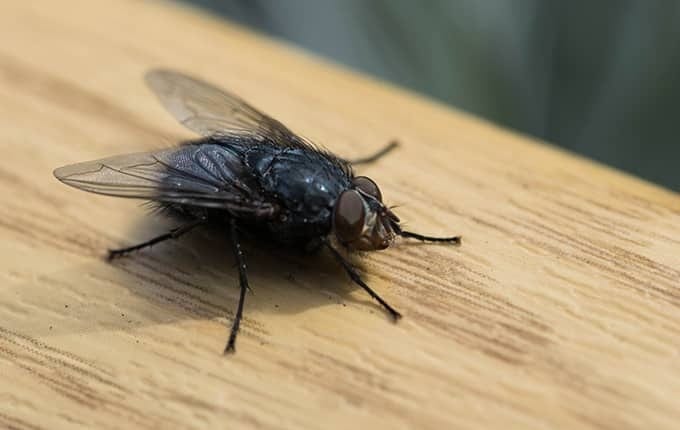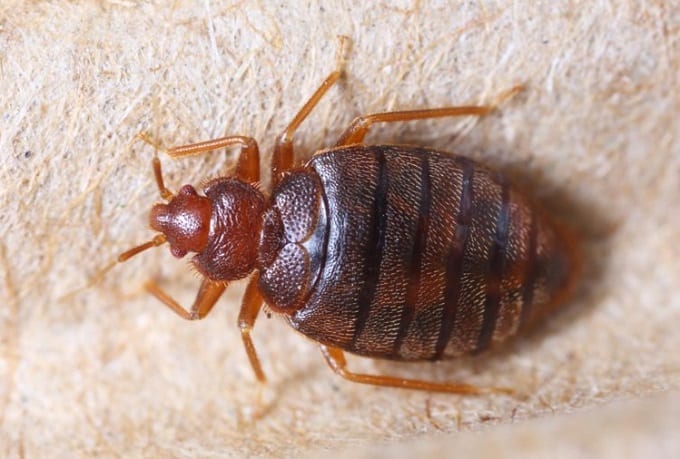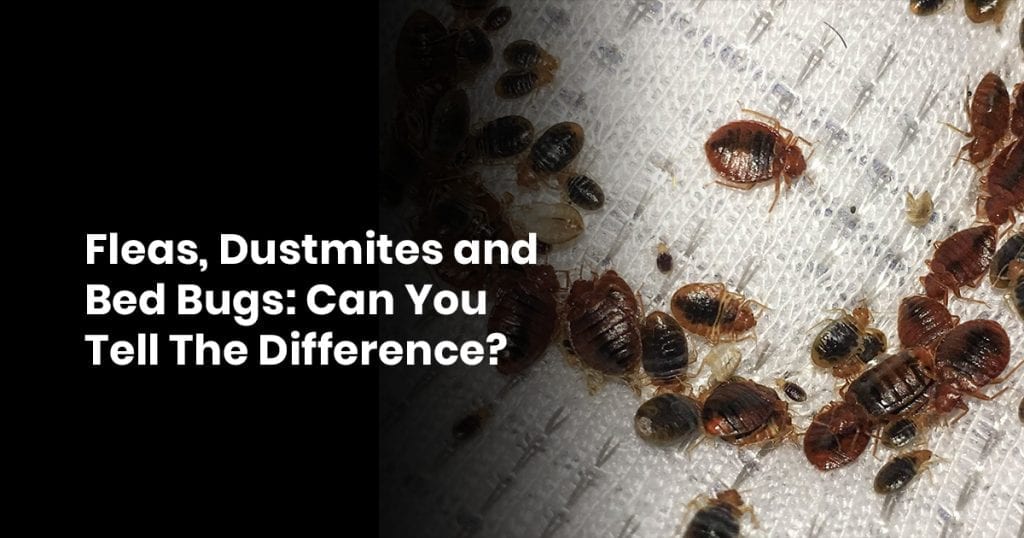When it comes to common household pests, fleas, dust mites, and bedbugs are three that seem to occur regularly on people’s problem lists.
What makes these small but annoying insects even worse is that they can be hard to spot and even harder to differentiate between the other so people find it difficult to treat them the right away, wondering if they’re dealing with bedbugs vs dust mites or something else entirely.
So, how do you tell the difference between fleas, dust mites, and bed bugs then?
Each of these small insects looks different and vary in sizes so knowing their appearance can be helpful in figuring out what’s infesting your home. A dust mite is so small they can’t usually be seen, a bed bug is an oval, flat, and reddish-brown in color, and a flea is a small brown or black speck with a long and flat body, so each is quite unique.
There’s more to these insects than just their appearance and because they’re so common it’s important to know how to differentiate them.
With a basic understanding of their similarities and differences as well as how to treat their presence in your home, you’ll be better equipped to keep them away in the future and prevent an infestation.
Contents
What’s the Difference Between Fleas, Dust Mites and Bed Bugs?
Fleas, dust mites, and bed bugs are some of the most common household pests that people deal with but it can be hard to tell the difference between them with an untrained eye.
Although they can all be irritating and often hard to remove from your home, each is its own insect and has some distinguishable features and behavior that sets them apart.
Fleas

A flea is a small wingless insect that feeds on the blood of its host, whether it’s a human or another animal. It’s common for dogs and cats to have fleas but they can also be found on furniture, bedding, and human hosts.
Their tiny size usually grows no more than a 1/8 of an inch which makes them hard to spot and bodies that are flat and long, either brown or black in color.
Their hind legs make them skilled at jumping and an infestation can occur quickly as they lay up to 20 eggs at a time.
Dust mites

Dust mites are small arthropods that are almost microscopic and usually less than half a millimeter in size.
They tend to feed on dead skin cells which is why bedding and mattresses are common places for them to live, as well as carpets and curtains.
A dust mite is wingless with an oval-shaped body and light in color with stripes, if you’re able to view them close enough to see. Unlike bed bugs and fleas, they don’t bite and don’t feed on their host’s blood.
Bed bugs

A bed bug is a small, flat, brown, oval-shaped insect that will sometimes appear reddish-brown once it has been feeding and is full of blood.
They live primarily in mattresses and bedding and feed on human’s blood, and will grow no larger than the size of an apple seed.
They can quickly spread and will attach themselves to clothing and bedding and are known as notoriously hard to get rid of.
Which Pest is the Most Dangerous to Have?
When we think about common household pests we usually view them as unhygienic or irritating to have around the home.
The real issue with many of these pests though, including dust mites, fleas, and bed bugs, is that they actually have the potential to do real harm to our health which is why an infestation needs to be taken seriously.
Having dust mites in your home is one of the leading allergens that cause illness and respiratory issues and a household where people with existing allergic reactions or asthma live will be especially at risk.
This is due to the fact that dust mites reproduce quickly and easily, and they excrete up to two thousand waste particles in just a few weeks of their life cycle.
Fleas might not seem as dangerous because they pose no immediate health risk to humans, but it is the after-effects of their bite that can be harmful.
A flea bite, when not treated properly, can become infected due to the itching that it causes, and in pets, it can cause respiratory issues and even anemia due to the loss of blood from them feeding on the host.
Bed bugs are not considered to be dangerous usually but the reaction from a bite can vary from mild itching to full allergic response.
Unlike other parasites, they haven’t been known to transfer diseases to humans so they pose more of an irritation than a health risk when compared to the others.
Regardless, an infestation of bed bugs can get seriously out of control and the bites may be more than you can handle.
Signs You Have a Pest Infestation From These Insects
Each of these pests come with their own warning signs that might indicate an infestation in your home.
Staying vigilant and becoming aware of these signs is the best line of defense against them and can stop an outbreak before it gets too serious.
- Bites: Both fleas and bed bugs feed on the blood of their host and will pierce the skin in order to get it. A bed bug bite might look like a small row of three bites in succession and can mimic the look of a mosquito bite. A flea bite is usually found on the lower parts of the legs or ankles and will also resemble a mosquito bite, but will usually only be a single bite on its own.
- Bedding: Signs of bed bugs can be found in bedding by looking closely at your bedding to spot brown or red stains on the mattress from blood or fecal spots or obvious signs of the bugs.
- Allergies: An increase in allergic symptoms like sneezing, coughing, watery and itchy eyes, and wheeziness could indicate an infestation of dust mites. Allergic reactions to insect bites could be caused by either bed bugs or fleas. Feeling more itchy than usual when sitting on furniture or lying in bed.
- Pets: Checking your pets regularly could be a way to spot fleas which is where they usually live. Look for signs of the small insects, bites, or fecal matter left behind in the fur, or take notice if your dog or cat seems to be scratching excessively.
How to Effectively Get Rid of Fleas, Dust Mites and Bed Bugs
Once you’ve established that you have a problem with any of these pests, the hardest thing to do is try and rid your home of them.
All three are known for being difficult to eradicate completely and they usually require more than one type of treatment to effectively rid your home of them.
Consider these proven methods if you have an infestation of dust mites, bed bugs or fleas.
- Bed bugs: Clean all bedding, mattresses, carpets, curtains, and clothes in hot water and dry them in direct sunlight. Use a chemical pest killer or insecticide to treat the home, being mindful that bed bugs are immune to some common products used for pests.
- Fleas: Wash and comb any infected animals to remove the fleas and their eggs. Clean all affected furniture and bedding with a hot cycle in the washing machine and direct sunlight. Use a pyrethrin based insecticide and ultrasonic pest repellent to kill any remaining fleas and eggs that might be left behind and then repeat in a couple of weeks.
- Dust mites: Wash all bedding, furniture, curtains, and carpet at home with hot soapy water and leave them to dry in direct sunlight. Use an aerosol spray for dust mites to treat the area before putting the clean sheets and bedding back on.
Related Questions
These common household pests might be small but they can have a huge impact on the home.
We have the answers to some popular questions people have about bed bugs, dust mites, and fleas to give you more knowledge to fight the issue.
What Kills Dust Mites Naturally?
There are some natural approaches you can take for killing dust mites but the best results usually come from harsher chemicals and insecticides.
Sometimes a combination of natural treatments like steam cleaning or tea tree oil along with an insecticide will be beneficial.
Can Fleas Live in Human Hair?
It’s not as common for fleas to live in human hair as they do with cats and dogs, and keeping your hair washed with shampoo and conditioner is the best way to prevent this.
However, they can bite your scalp or on your body which leads to infection and allergies in some cases.

